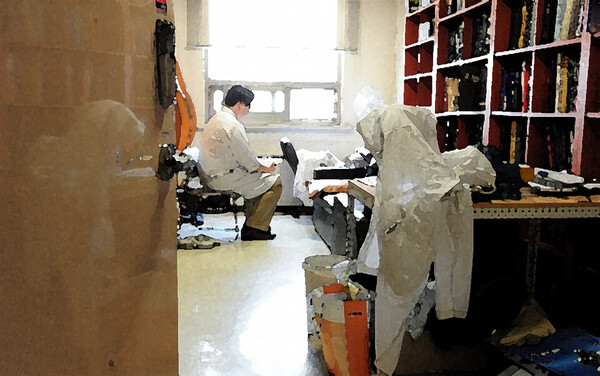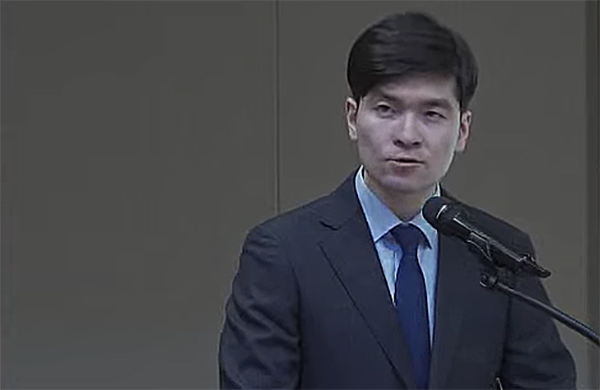One of the government’s priorities when unveiling its essential healthcare policy package was the training environment for interns and residents. However, most trainee doctors regarded it as “fool’s gold,” because the plan lacked ways to finance it.

The “priority reform tasks" announced by the Special Committee on Healthcare Reform last Friday also promised to drastically reorganize the training system and strengthen the government’s investment in training costs. Still, there was no mention of its scale or funding.
Kim Eun-sik, a resigned trainee doctor who led a group of interns and residents at the Severance Hospital, pointed out the problems with the government's policies at a symposium organized by Yonsei University's Faculty Council on the theme of "The Present and Future of Medical Conflict in 2024" at Yonsei University College of Medicine.
Kim emphasized that in developed countries, the state supports the cost of training trainee doctors to foster specialists.
According to Kim, the U.S. provides $10 billion (about 13.69 trillion won) annually from Medicare, a public health insurance program for people over 65 and people with disabilities, to train interns and residents. That's about 200 million won per doctor. Medicaid, a public health insurance program for low-income people, also provides $3.8 billion annually, and private insurers provide $7.2 billion annually.
The government pays for all training expenses in Canada and the United Kingdom, and Australia provides a stipend of 90 million won per year for each medical resident. The government pays for all intern training costs in Japan, while residents receive some support for training fees and other expenses.
Korea, on the other hand, provides minimal support for training costs. According to a report by Korea University's Industry-Academia Cooperation Center released in December last year entitled "A Study on Policy Improvement Measures to Strengthen Publicity of Specialty Training Education," the per capita training cost for specialists in Korea is 99.93 million won annually. A total of 1.27 trillion won is spent on training for medical residents, but government support is only about 64 billion won annually. That means only 5 percent of the training costs are covered.

Under these circumstances, increasing the number of medical school students by 2,000 would mean adding 2,000 more medical residents every year.
"If a trainee doctor's per capita training cost is 100 million won, the training cost will increase by 200 billion won per year from the first year when the 2,000 additional students start their training courses and 2 trillion won is needed nationwide per year," Kim said.
However, the government's package of essential medical policies only provides 1 million won per month for a trainee doctor in some essential specialties.
In this situation, Kim said, the government's plan to reorganize hospitals centered on specialists to improve the training environment is just a "bad check."
"We need to hire more specialists to reorganize into a specialist-centered hospital. To adjust the current 3-to-2 ratio of specialists to majors to 9-to-1, which is the level of the United States and Japan, the number of specialists employed in training hospitals must be increased by about six times more than now," Kim said, pointing out that the government is avoiding mentioning how it will finance and support the astronomical labor costs involved in the process.
Kim criticized the government for making rhetorical statements about expanding the number of specialists and improving the training environment without discussing the most important cost burden and financing.
"The departure of trainee doctors from hospitals has revealed that the Korean healthcare system is like a house of cards," he said. "Interns and residents, who are only trainees in a normal workplace, have stopped working, but the public is witnessing the spectacle of university hospitals, including the so-called Big Five hospitals, suffering from financial difficulties and switching to emergency management systems."
Kim noted that unless the chronic low medical fee system is improved, teaching hospitals will try to maximize the use of low-paid medical residents to run their hospitals.
“As long as this continues, there will be no improvement in the training environment regardless of the number of medical residents," he added.
Related articles
- Despite professors’ 1-day leave, SNUH reduces confusion by coordinating appointments
- Medical device makers hit by collateral damage in government-doctor standoff
- Why this AMC professor, treating 500 lung cancer patients annually, resigns from his position
- University hospitals in crisis: senior doctors resign amid burnout, financial woes deepen
- This pediatrician found greatest reward in children’s laughs. The government trampled on that simple wish.
- ‘Government will immediately appeal if court suspends increasing medical school students’
- Medical community skeptical of national responsibility system for medical resident training

